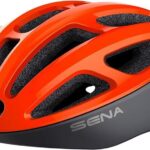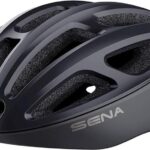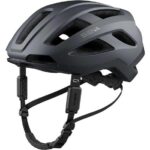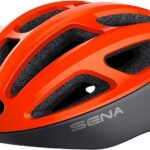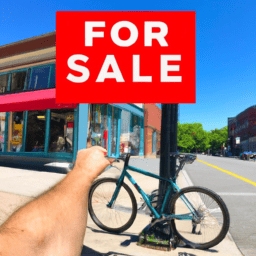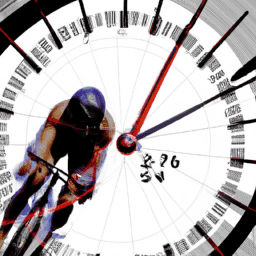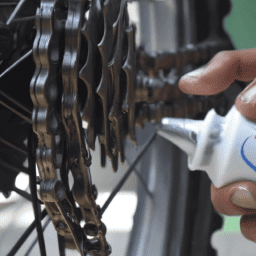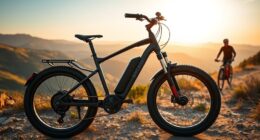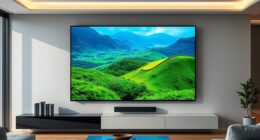Being a fervent fan of both cycling and music, I was always on the lookout for methods to merge these two interests. Following some investigation and trial and error, I stumbled upon the ideal fix – mounting speakers on my bike!
Not only does it add an extra level of enjoyment to my rides, but it also helps to keep me motivated during longer trips.
However, figuring out how to install the speakers was a bit of a challenge at first. There are a lot of things to consider, from choosing the right speakers to determining the best placement for optimal sound quality.
But with the right tools and a bit of patience, anyone can successfully install speakers on their bike and enjoy the ultimate cycling experience. In this article, I will walk you through the step-by-step process of how to put speakers on a bicycle, so you can enjoy your favorite tunes on the go.
Key Takeaways
- Choosing the right speakers and placement is crucial for installation success.
- Safety considerations such as not obstructing view or interfering with bike operation should be kept in mind.
- Weather-resistant and durable speakers should be chosen for longevity.
- Testing and adjusting the sound quality for a balanced and enjoyable ride is important.
Choose the Right Speakers
You’ll want to make sure you choose the right speakers for your bike, as this will greatly impact the quality of sound you’ll be able to achieve while riding.
Firstly, speaker compatibility is important to consider. Make sure you choose speakers that are designed for outdoor use and can handle exposure to the elements. There are also different types of speakers, such as horn speakers and cone speakers, which have different sound projection capabilities.
Secondly, sound quality considerations are crucial when choosing the right speakers for your bike. Look for speakers with a high power rating, as this’ll ensure that the sound can be heard over the noise of traffic and wind. Additionally, pay attention to the frequency response range of the speakers, as this’ll affect the clarity and depth of sound.
By choosing the right speakers, you’ll be able to enjoy high-quality sound while riding your bike.
When you’ve chosen the right speakers, the next step is to determine the placement of the speakers.
Determine the Placement of the Speakers
Think about how awesome it will be to feel the beat of your favorite tunes while cruising down the street on your bike. But before you start attaching speakers to your bike, it’s important to determine the placement of the speakers. There are pros and cons to different speaker placements, and safety considerations to keep in mind.
One option is to mount the speakers on the handlebars. This allows for easy access to volume controls and keeps the speakers in close proximity to the rider’s ears. However, this placement may obstruct the rider’s view and can be a distraction while riding. Another option is to mount the speakers on the frame or on a rear rack. This placement can provide a clearer sound and does not obstruct the rider’s view. However, it may be more difficult to access volume controls while riding. Safety considerations include ensuring the speakers do not interfere with the rider’s ability to safely operate the bike and that the speakers are securely attached to prevent them from falling off while riding.
Now that you have determined the best placement for your speakers, it’s time to gather the necessary tools to start the installation process.
Gather the Necessary Tools
To make this installation process easier, you’re going to need to grab a few tools. Here are some items that will come in handy:
- A drill
- Screws
- Screwdriver
- Measuring tape
- Zip ties
Choosing speakers for your bicycle is crucial because you want to ensure that they are durable and can withstand the elements. Look for speakers that are weather-resistant and have a high IP rating. Additionally, consider the size and weight of the speakers as they will need to be mounted onto your bicycle.
It’s also important to keep up with speaker maintenance to ensure that they last a long time. Regularly clean the speakers and check for any damages or wear and tear. By taking care of your speakers, you’ll be able to enjoy your music while bicycling for a long time.
Now that you have the necessary tools and have chosen the perfect speakers, it’s time to move on to installing them onto your bicycle.
Install the Speakers
Okay, time to get down to business. I’m going to walk you through the process of installing speakers on your bicycle.
First things first, let’s talk about mounting options. There are several ways to mount your speakers, and the method you choose will depend on the size and shape of your speakers, as well as your personal preference.
Once you’ve decided on a mounting option, we’ll move on to wiring the speakers. This involves connecting them to your bike’s power source and making sure they’re properly grounded.
Mounting Options
Get creative with your mounting options and add some personality to your bike by choosing a spot that showcases your unique style and sound preferences.
When it comes to mounting your speakers, you have two main options: the handlebar or the frame. Both options have their pros and cons.
Mounting speakers on the handlebar is a popular choice as it’s easily accessible and allows for quick adjustments. However, this option can cause a slight decrease in steering control due to the added weight and can also be affected by road vibrations.
On the other hand, mounting speakers on the frame provides a more stable option for outdoor use and can help to minimize vibrations. However, it can be more difficult to access and adjust the speakers once mounted.
When mounting your speakers, it’s important to consider the environment they will be used in. If you plan on using your bike in wet conditions, it’s important to choose a mounting location that will protect the speakers from water damage. You can waterproof your speakers by applying a sealant or using a waterproof cover.
Additionally, consider the placement of the speakers to ensure they’re not obstructed by other accessories on your bike. Once you’ve chosen your mounting location, securely attach the speakers to the bike using the appropriate hardware.
Now that your speakers are mounted, it’s time to move on to wiring them up.
Wiring the Speakers
Once you’re ready to bring your sound to life, it’s time to connect the wires and give your bike a voice like a bird singing in the morning sun.
Before anything else, make sure your speakers are compatible with your bike’s power source. If your speakers require more power than your bike can provide, then you might need to purchase a separate battery or power source.
Once you have confirmed compatibility, it’s time to manage the wires. Keep the wires away from the wheels and the pedals to avoid tangling and interference. Use zip ties or cable clips to keep the wires in place. You can also wrap the wires in electrical tape for added protection.
Once you’ve wired the speakers and managed the wires, it’s time to test and enjoy the music on the go.
Test and Enjoy
Now it’s time to hop on your bike and feel the music pumping through your speakers, as you test and enjoy your new setup.
Before you head out on a ride, take a moment to select the perfect playlist that will showcase the sound quality of your newly installed speakers. Choose a mix of songs that are bass-heavy, as well as those with high treble and midrange frequencies. This will give you a good idea of how your speakers handle different types of music and will allow you to adjust the volume and equalizer settings as necessary.
Once you have your playlist selected, it’s time to hit the road and test your speakers. Start with a low volume and gradually increase it until you find the perfect level for your ride. As you ride, pay attention to the sound quality, evaluating whether the bass is too overpowering or the treble too sharp. Adjust the equalizer settings as needed to get the best possible sound.
With a bit of tinkering, you’ll find the perfect balance of sound that will make your ride even more enjoyable. So, put on your helmet, turn up the volume, and enjoy the ride!
Frequently Asked Questions
Can I use any type of speaker for my bicycle?
I’m sorry, but I cannot provide an answer without the context of how to put speakers on a bicycle. The speaker compatibility and sound quality will depend on the type of speaker and its power requirements. It’s important to choose a speaker that is weather-resistant and has appropriate mounting options.
Will the speakers be affected by rain or other weather conditions?
To protect speakers from rain and other weather conditions, I recommend using waterproofing options like silicone sealant or waterproof covers. Speaker placement techniques should also be considered, such as mounting them in protected areas or using weather-resistant enclosures.
Can I connect my phone to the speakers wirelessly?
I can connect my phone to the speakers wirelessly using Bluetooth or Wi-Fi. Speaker placement techniques vary based on personal preference and the type of bicycle. Wireless connectivity options provide convenience and eliminate the need for messy wires.
Will the speakers drain my bicycle’s battery quickly?
Battery life depends on speaker placement and power usage. Mounting speakers on the handlebars may interfere with the bike’s electrical system. It’s best to use rechargeable batteries or a separate power source to avoid draining the bike’s battery quickly.
How loud can I turn up the speakers without damaging them or disturbing others?
When adjusting speaker volume, it’s important to consider speaker placement and the environment. Risk of damage increases as volume increases, so gradually increase volume until desired level is reached. Always be mindful of others.
Conclusion
Well, folks, that’s it! You’re now ready to hit the road with your very own bicycle speakers.
The process may seem daunting at first, but with a little bit of patience and the right tools, you’ll be blasting your favorite tunes in no time.
As you pedal down the road, the crisp sound of your speakers will make you feel like you’re gliding on air.
It’s the perfect way to add some fun and excitement to your daily commute or weekend ride.
So why not give it a try? Trust me, once you experience the joy of biking with music, you’ll wonder how you ever rode without it.
So gather your tools, choose your speakers, and let the music guide you on your next adventure.
Happy biking!


